Many CRM databases are cloud-based, so teams have access to contact data anytime and anywhere. CRM databases are considered the third major benefit of CRM systems, according to sales personnel.
Here’s everything you need to know about what CRM databases do, how they work, and where they can benefit your company. I’ve included insights from sales managers about the benefits of CRM databases and how they use them to optimize their sales processes.
Table of Contents
- What is a CRM database?
- Benefits of a CRM Database
- How to Start Using a CRM Database
- CRM Database Management Best Practices
- Popular CRM Databases
- Context and Consistency: The Case for a CRM Database
What is a CRM database?
A CRM database allows businesses to manage relationships with contacts and customers by centralizing information. When integrated under a unified ecosystem, this information can is also useful for streamlining processes across other departments, like marketing and customer service. These tools create a single source of truth for your team. You can organize your contacts’ data, keep track of deals, and create reports. You can typically see each contact’s source, if they visited your website, their company, and more.
CRMs also log interactions. You can view a contact and see the touchpoints they have had with their company. You can see a log of calls with your sales teams, the number of emails they’ve opened from you, and a history of chats with representatives.
CRM platforms make it possible for staff to access customer data from any supported device, which, in turn, allows employees to easily find relevant data and collaborate on new sales and marketing initiatives. You no longer have to tap a colleague on the shoulder for info. It’s all in your CRM!
But don’t just take my word for it — Hubspot surveyed 1,477 sales professionals, and 89% are using CRM tools. Of those using a CRM, 30% said a major benefit was efficiency.
Types of CRM Databases
CRM databases sort data into different types, also called categories, to help streamline the sales and marketing process. This goal is achieved by analyzing information from various data pipelines.
For example, an ecommerce transaction database might represent one data pipeline that provides information about customer purchases, service interactions, and contact history.
See three common CRM data categories below.
Operational CRM
Operational CRM data refers to information that allows teams to perform better key tasks, such as sales, marketing, and customer service.
For example, customer support tickets or where a customer is in your deal pipeline would fall into this category.
Analytical CRM
Not surprisingly, analytical CRM data is used for analysis. By understanding the relationship between specific data points or data types, business leaders are better equipped to make both short and long-term strategic decisions.
Collaborative CRM
Collaborative CRM data is shared among team members and across departments to create a unified source of customer truth. This allows staff to complete key tasks more quickly and helps ensure that when customers contact your company, they don’t need to fill in the blanks about previous purchases or problems.
Worth noting? Some CRM tools can be configured to handle all three types of data, while others specialize in a specific pipeline.
Benefits of a CRM Database
CRMs can help you stay organized and keep a clean record of important data. If you’re on the fence about adopting a CRM, consider the following benefits.
1. You’ll keep your contacts organized.
Once you add your contacts to a CRM, you can sort and filter them by different contact properties. For example, you can sort through customers by first and last name, email address, and company name.
If you need to reach out to a specific contact, you can find them promptly and efficiently.
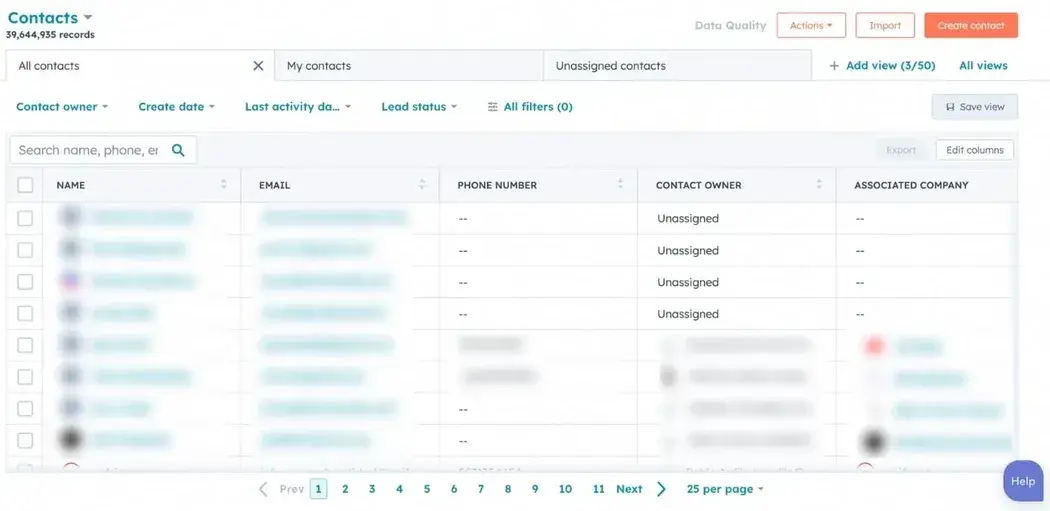
Get organized with HubSpot’s free CRM
For many businesses starting, the above is usually managed in spreadsheets. While a spreadsheet database is adequate, your company and team will soon outgrow it. You’ll find yourselves desperate for more efficiency and see that the spreadsheet style of managing leads is causing your team to miss opportunities.
A well-managed CRM database will bring a trove of data to your contacts. Thanks to integrations, the data will be more up-to-date, and importantly, your sales teams will be able to leave neat notes or comments about meetings or calls. Plus, you can get reports about a contact’s engagement so you can tell who your hottest prospects are.
How Experts Use CRM Databases for Contact Management
Scott Williamson, vice president of sales engineering at R. Williamson & Associates, finds the centralized contact list one of the most beneficial features of a CRM database.
Williamson says, “A centralized contact list with key details about each account, like company information, names, and contact info of key decision-makers, and notes from past conversations. This allows me to prepare for calls and meetings to build better relationships.”
Another key feature Williamson uses is workflow automation. His CRM automatically logs calls, emails, meetings, and next steps. It also reminds him to follow up.
“It saves me time and ensures nothing slips through the cracks. The CRM also gives me a full view of each account’s history so I can see what’s worked in the past and propose solutions that meet their needs,” Williamson says.
For example, Williamson posits, if he sees a customer purchased a particular product two years ago, he can suggest an upgrade or a new solution that complements what they already have. “A good CRM with the right features is how I stay organized, provide great service, and ultimately close more deals,” Williamson says.
What I like: Williamson’s CRM gives him a holistic view of what’s happening with each contact. Williamson uses this data to prep for calls, helping to deepen his connection with prospects. The CRM also provides a task list to encourage follow-up.
How this helps: By filtering contact data, your staff can spend less time looking for information and more time closing deals.
2. You can manage your deals easily.
When CRMs are managed correctly, many provide a full layout of your deal pipelines, stages, and close dates, which makes deal management easier. Salespeople can see an overview of their deals and progress toward their monthly quota.
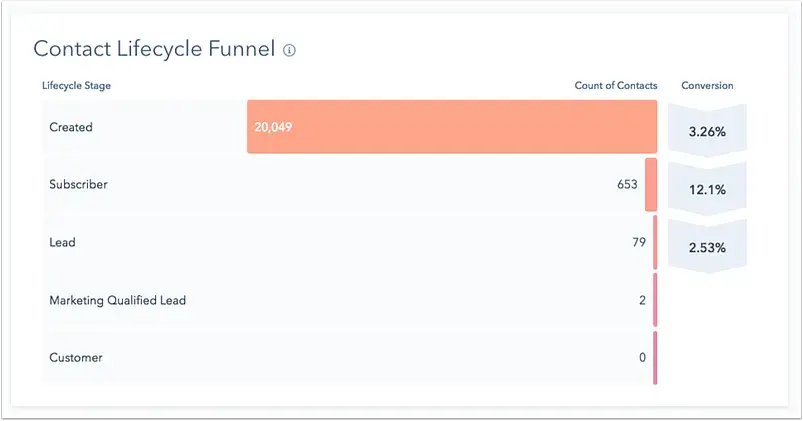
Start managing your sales better today!
Your sales data will help you identify what’s working well and what needs improving. Many CRM databases will allow you to aggregate data differently, such as by salesperson, so you can see who’s closing the most deals and who might need more support and training; more experienced sales personnel can mentor and train other team members.
How Sales Experts Manage Deals in CRM Databases
Tornike Asatiani, CEO at Edumentors, describes their CRM database as “crucial for managing customer relationships and streamlining our sales process.” One of the major benefits is “Centralized data,” says Asatiani, which “provides a single repository for customer information, making it easy to track interactions and manage leads.”
What I like: According to HubSpot’s research, small businesses and entrepreneurs have a tendency to de-prioritize things like CRM. Instead, it’s common to focus on things like payment tools.
This makes sense because every business needs its cash, but waiting on the CRM set-up means leaving money on the table. 28% of sales personnel using a CRM say it helps customer retention. If you’re managing your leads like Asatiani, you can expect a better experience and, likely, happier, retained customers.
How this helps: CRM tools streamline sales and marketing operations by helping you understand where your deals come from and how often sales efforts lead to conversions.
3. You can make reports quickly.
In most robust CRM systems, you can build reports to keep track of your contacts and deals. You can use this information to create revenue forecasts. This makes assessing performance against your goals easy.
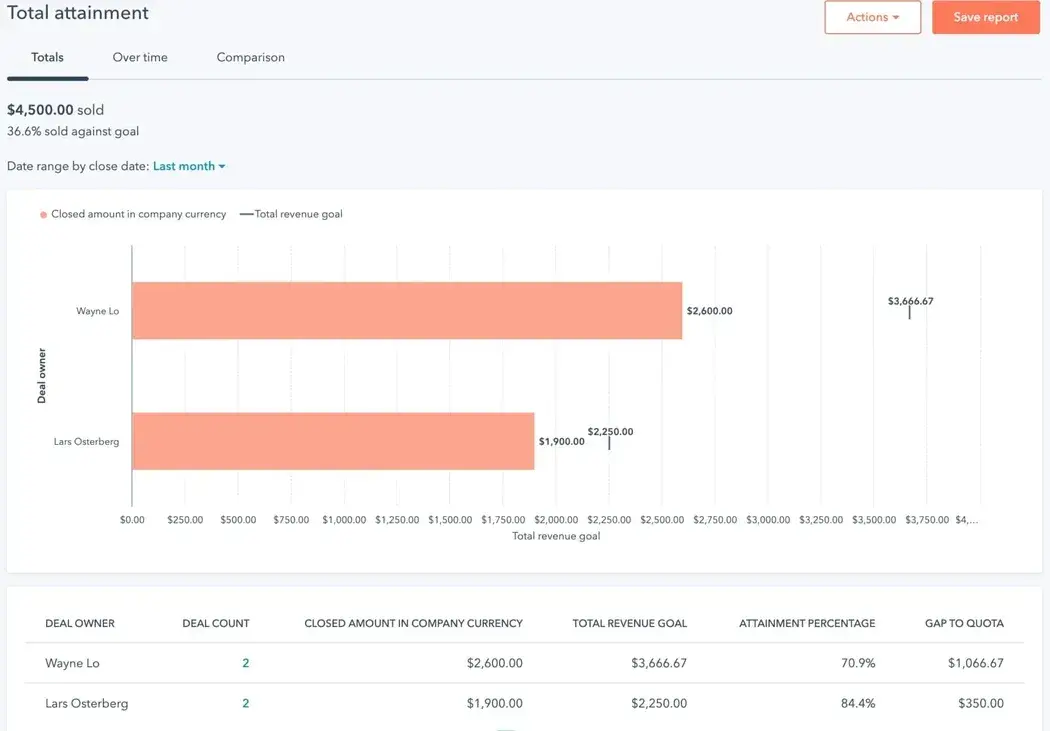
Check out how you can create reports.
With a CRM, you can speed up your sales processes, communicate with contacts effectively, and plan for your business's future.
Many CRMs will allow you to create custom reports, so you can generate reports that give you the information you most want to see.
How Experts Create Custom Reports in CRM Databases
Joy Bian, sales and marketing manager at RELYIR, customized the CRM so there is a record of product test results and customer feedback. This report makes it easy to present concrete evidence of a product's superiority to potential clients.
Bian says, “This has not only helped me save time but also has effectively boosted the trust factor in our sales conversations. Through my personal experience, a well-optimized CRM system can be a game-changer for client interactions, ultimately enhancing your sales figures and customer satisfaction rates.”
What I like: The CRM database provides a centralized place where sales teams can find their prospect list and access the data that might convince them to buy.
This functionality allows for seamless processes and will help build sales team members’ confidence when they’re on the phone with prospects. Plus, it will likely give them feedback from clients they’re not actively working with, meaning sales teams build a greater understanding of how the product is serving the wider audience.
How this helps: Reports provide context to current operations. This allows managers and team leaders to see what’s working well, what needs improvement, and what needs to change. You can provide training to help fill in performance gaps.
If you’re ready to take the next step with your customer relationship management, check out these CRM best practices.
4. You can leverage predictive analysis.
Predictive analysis helps you make data-driven decisions for your marketing and sales campaigns. Some CRMs will analyze purchase history, browsing patterns, marketing engagements and customer feedback to help your sales team decide what their customers might do next.
This analysis is more efficient than manual human reviews and allows your sales team to make informed decisions, tailor their marketing efforts, and improve customer satisfaction by proactively addressing needs.
How Experts Use CRM Databases With Predictive Analysis
Eva Miller, vice president of marketing at Digital Silk, relies heavily on CRM and predictive analysis. Miller describes predictive analysis as “invaluable” and found the CRM database was “instrumental in a digital transformation project that spiked company revenue by 40% in just two years.”
Miller notes that her CRM can forecast customer behaviors and sales trends, allowing her team to proactively adjust campaigns before changes in the market happen. The ability to integrate with other marketing tools, such as automation software, is also crucial.
“On one occasion, using our CRM integrated with marketing automation, we developed a tailored content strategy that boosted our web traffic twofold,” says Miller. “These features have been the difference between a thriving business and one that just survives in today's digital landscape.”
What I like: Eva Miller makes data-driven decisions by using predictive analysis within the CRM. Knowing what customers wanted allowed Miller’s team to send an effective marketing campaign with tailored messaging.
How this helps: Predictive analysis helps sales teams make efficient and data-driven decisions and keeps them doing what they do best (building relationships instead of analyzing large data sets).
5. You can access AI features.
Many CRMs, including HubSpot, offer AI features that make the sales process more efficient. ChatSpot can be used alongside HubSpot’s CRM to take the administration out of tasks. Instead of navigating to a report, for example, you can ask ChatSpot, in natural language, to generate a report, and it’ll return it to you instantly.
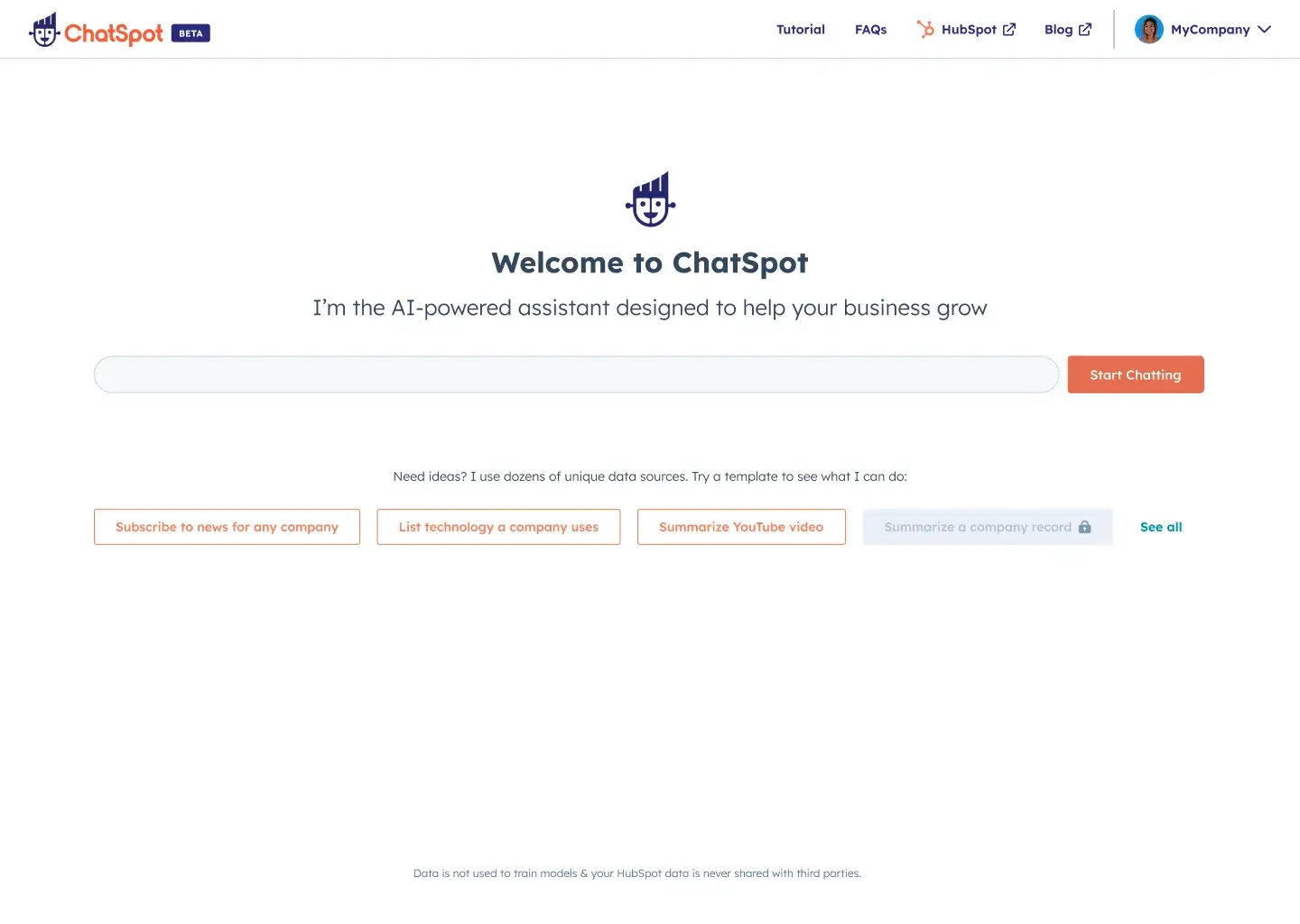
How Experts Use AI
I used HubSpot’s ChatSpot when testing CRMs with AI. I asked the software to generate an email for me. I created a prompt with details of what was needed, and within minutes, I had a full, ready-to-go email. This functionality is perfect for idea generation or inspiration. It took minutes to get the foundation of a winning email.
I’m not the only one who rates AI within CRM databases. In fact, HubSpot found that 54% of salespeople surveyed said that AI made it much, or somewhat, easier to compete with other businesses.
How this helps: AI features speed up or completely take over mundane tasks, allowing sales personnel to focus on what they love and what they’re good at.
6. You’ll stay proactive.
A CRM database acts as a task list for sales teams. If you’ve got your sales team fully on board with the CRM database, they should be keeping it populated with notes, setting reminders to follow up, and more.
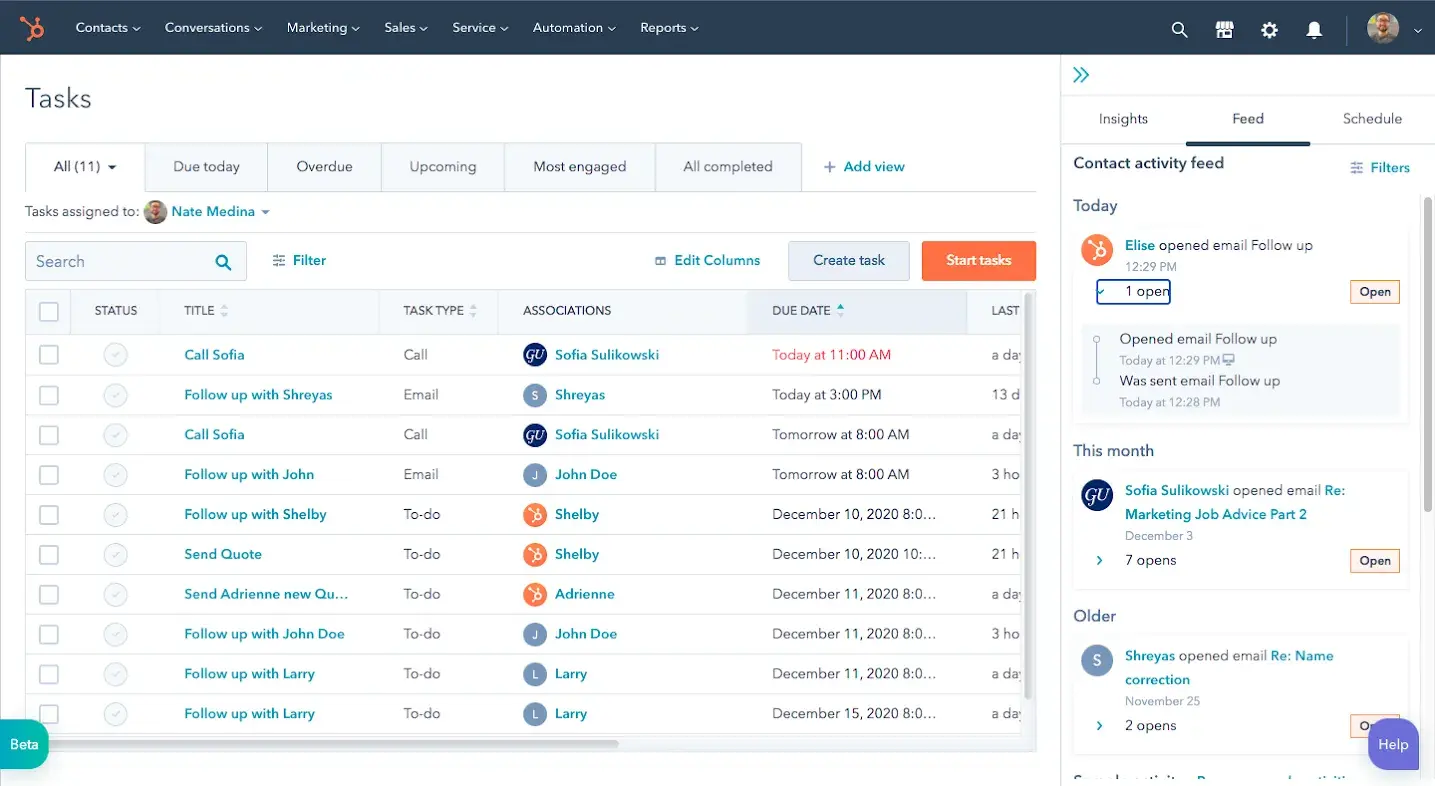
How Experts Use Task Management to Stay Proactive
Lara Woodham, director at Rowlen Boiler Services, says that tracking customer interactions and service history is one of the “most crucial features” of the CRM database.
Woodham says, “This enables us to provide tailored advice and support, enhancing customer satisfaction and retention … It's a game-changer in managing follow-ups and scheduling, ensuring we stay proactive and responsive in our engagements, which is vital in the heating and plumbing industry.”
What I like: Managing service history within a CRM allows Woodham and her team to be proactive. They could use this data to send reminder emails to customers. Or, set tasks for sales teams to get in touch.
How this helps: If you know a previous customer might be ready for your service again, you can contact them before they’ve had time to find another supplier.
How to Start Using a CRM Database
The earlier you start your CRM database, the better. In fact, you may already have the foundations of a database right now, even if it’s not the most sophisticated (e.g., in a spreadsheet.)
Start by tidying up the data you’ve already got, fill in data gaps, and bring everything into one central spreadsheet. This is useful because most CRM systems allow you to import data from a CSV. To give yourself the best possible start, spend some time cleaning the data and organizing it into categories like contacts, companies, and interactions.
The CRM database you choose will depend largely on your needs and the features you most want. When you’ve found your CRM, you should find a knowledge base, like HubSpot’s CRM knowledge base, that gives you all the details for an easy and successful import.
It's never too soon to start using a CRM, and the earlier you implement one, the better.
CRM Database Management Best Practices
Another benefit of starting your CRM earlier is that you’ll generally start with smaller datasets. Your data will be clean and aligned with legal and regulatory requirements.
When uploading data to your CRM, you should establish clear policies for data entry and updating to maintain data integrity and prevent inconsistencies. There should also be off-boarding policies for customers who don’t want to store their data within your CRM.
Regular audits and user training can help enforce these policies and keep your CRM data accurate and reliable.
Popular CRM Databases
Looking for a CRM database to help improve your sales, marketing, and customer retention processes? I’ve got you covered with four popular options here.
Hubspot
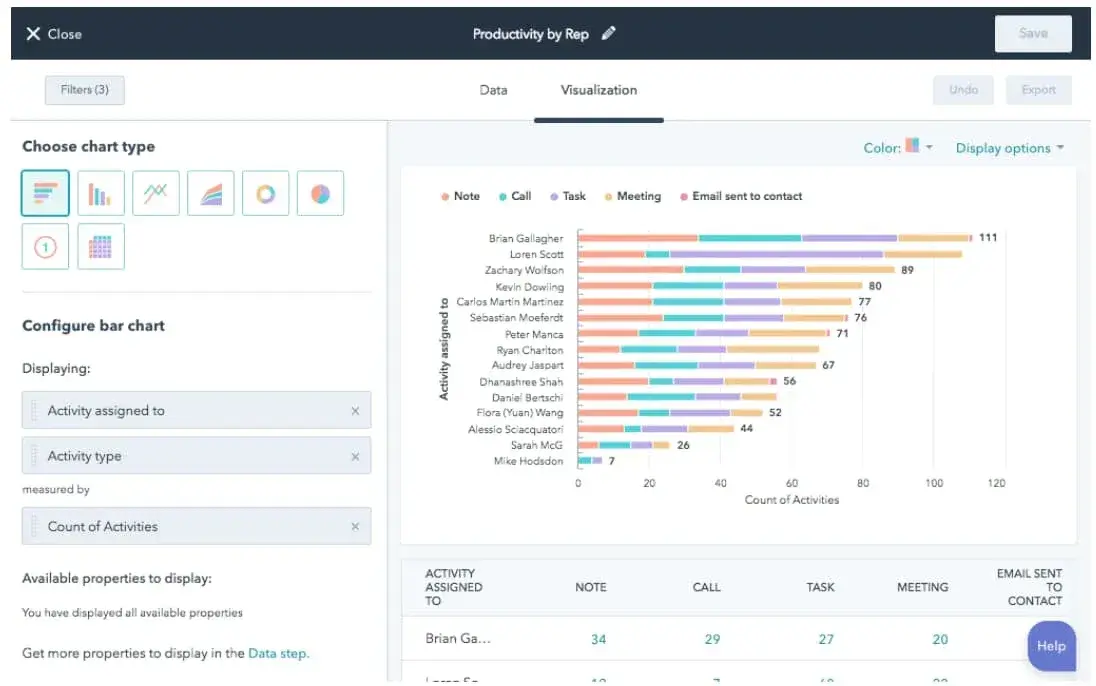
Hubspot’s free CRM database is consistently ranked as one of the best options on the market.
In part, this stems from the ease of use. HubSpot CRM specializes in handling a massive volume of customer data and also gets top marks for its ability to integrate with other software platforms.
What I like: HubSpot offers easy integration with more than 1,000 other software applications ranging from marketing and sales to data enrichment and data integrations like Vainu, making our tool a great choice for any business. HubSpot’s startup bundle means it’s great for even small businesses.
Salesforce
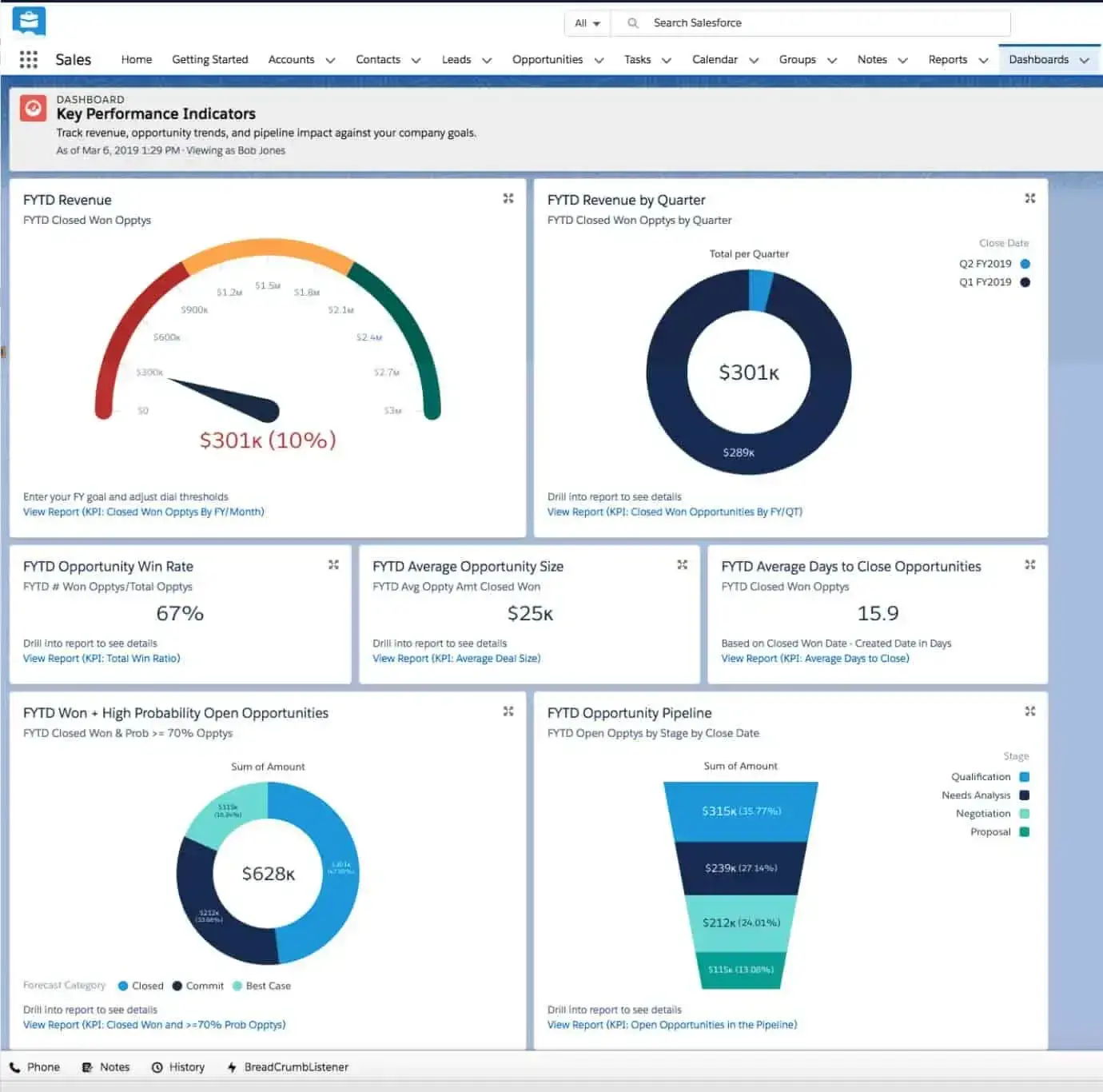
Also, a market leader, Salesforce CRM offers a large selection of industry-specific CRM products. You’ll also have access to modern sales features that let you make use of social media metrics to capture new leads and boost sales.
What I like: Guided learning tools make it easy for companies to get started with this CRM database.
Zoho
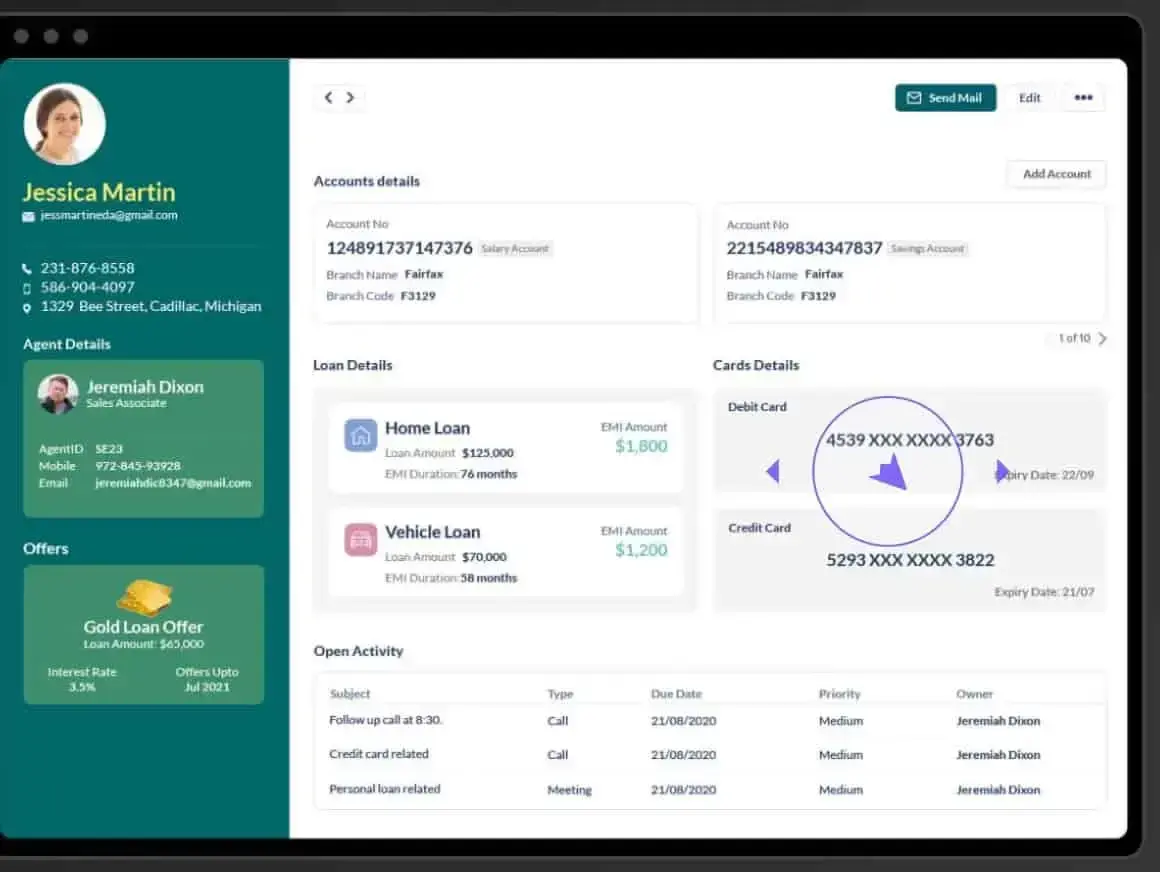
Zoho allows companies to build customized, user-friendly CRM frameworks that suit specific business needs. The solution also includes a suite of easy-to-use automation to help eliminate repetitive, manual tasks.
What I like: Real-time notifications of customer interactions let teams take action when it counts.
Freshworks
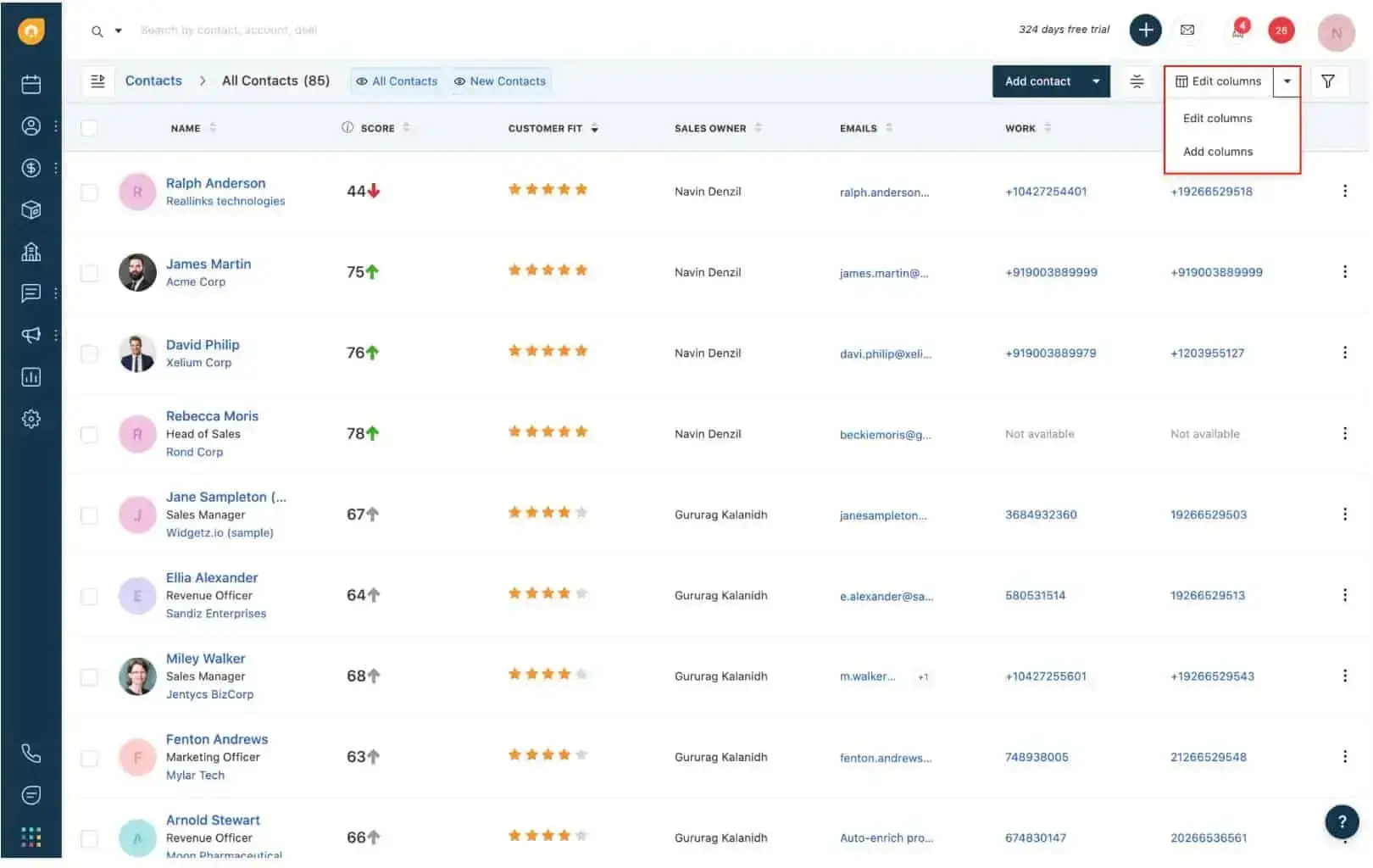
This affordable CRM option is all about communication and collaboration. With the ability to run customized email campaigns, manage deals, and forecast revenue, teams are equipped with the data they need to make better decisions.
What I like: Freshworks includes VoIP capabilities, allowing companies to consolidate some or all of their communications infrastructure.
Salesflare
Salesflare is a CRM database built specifically for B2B sales teams that want to sell more with less effort. Unlike other CRMs that rely heavily on manual data entry, Salesflare automatically gathers and organizes contact and company data, tracks interactions, and keeps everything up to date so salespeople can focus on closing deals rather than updating their CRM.
What I like: Salesflare’s automation goes beyond integrations—it proactively fills in gaps, reminds you to follow up at the right time, and keeps your pipeline organized with minimal input. It’s a perfect fit for small and medium-sized B2B businesses that want powerful insights without the admin hassle.
Context and Consistency: The Case for a CRM Database
From speaking with experts, it’s clear to see that a CRM database can support a team and generate revenue for a business.
The right CRM database can make all the difference when it comes to creating context and consistency across your organization. Everyone at your company will have access to the same data. Handing off deals, gathering insights, and tracking goals then becomes easy.
With all of this information, your company is in a better position to discover key trends. You can find pain points and discover your most important features. Soon, all your sales campaigns will be backed by data.


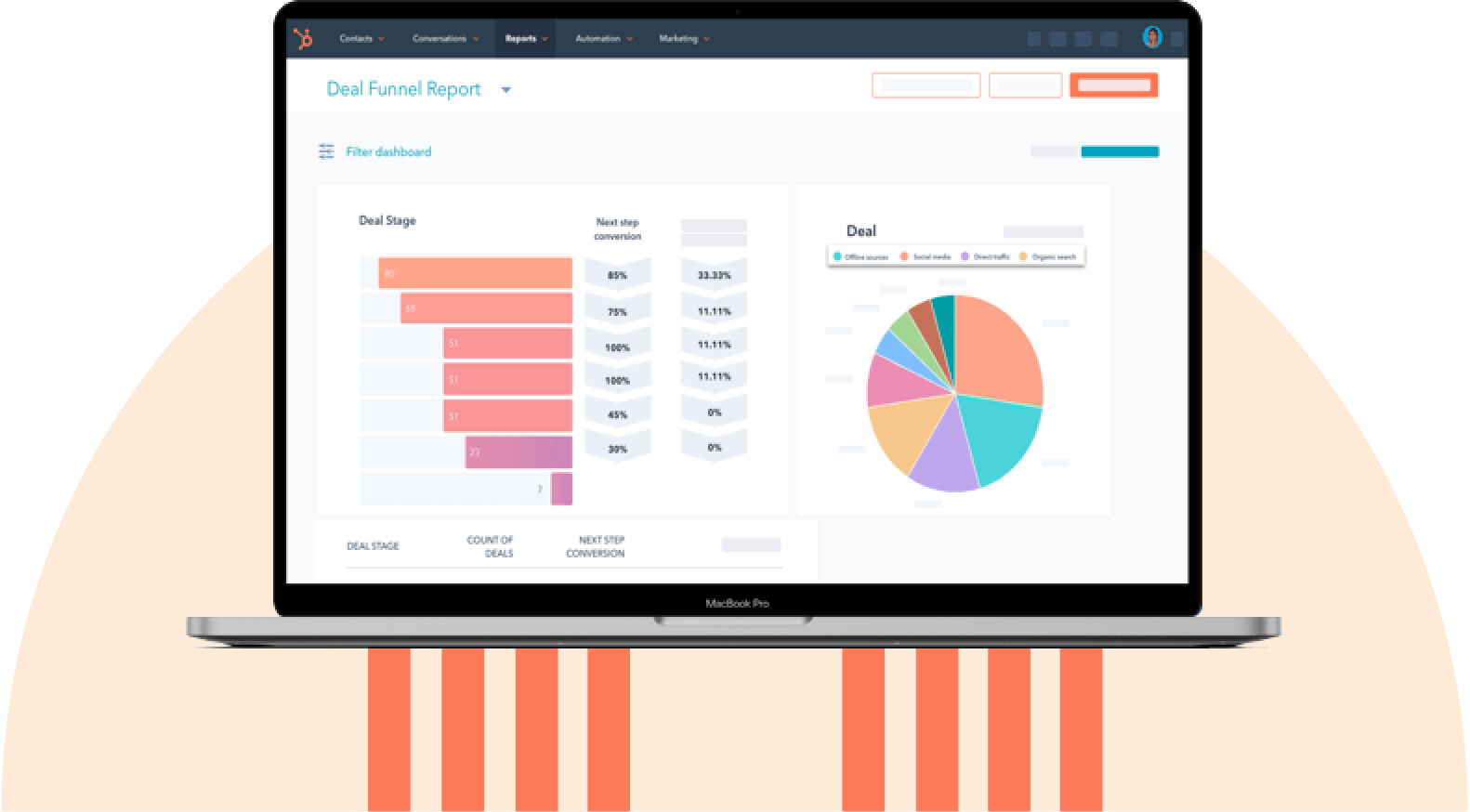


.jpg)
![The Importance of a CRM: Why Your Company Needs a CRM to Grow Better [New Data]](https://53.fs1.hubspotusercontent-na1.net/hubfs/53/1-Feb-23-2021-12-59-16-65-AM.jpg)


.jpg)


![How to Build a Business Case for CRM [Infographic]](https://53.fs1.hubspotusercontent-na1.net/hub/53/file-2635220133.jpg)